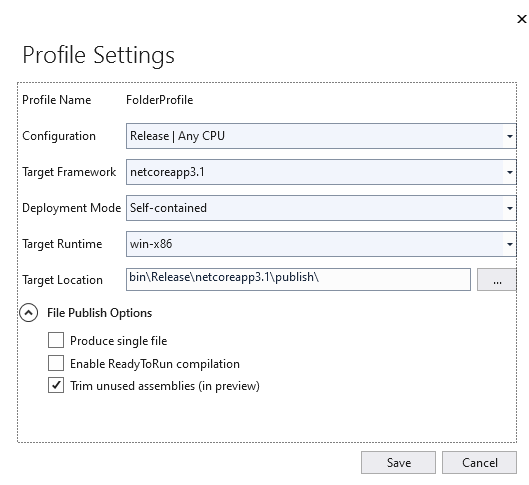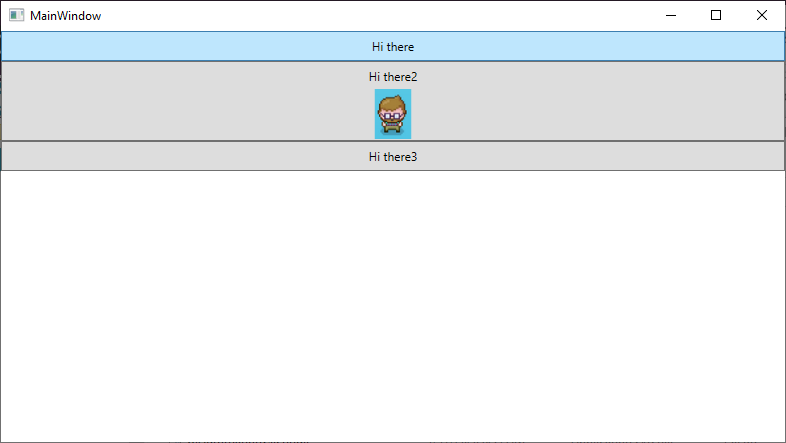Not a bug - this is a "use with care" feature 😉
https://github.com/mono/linker/blob/master/src/ILLink.Tasks/README.md
Adding reflection roots
If your app or its dependencies use reflection, you may need to tell the linker to keep reflection targets explicitly. For example, dependency injection in ASP.NET Core apps will activate types depending on what is present at runtime, and therefore may fail if the linker has removed assemblies that would otherwise be present. Similarly, WPF apps may call into framework code depending on the features used. If you know beforehand what your app will require at runtime, you can tell the linker about this in a few ways.
...












Is this bug related specifically to tooling in Visual Studio (e.g. XAML Designer, Code editing, etc...)? Probably not, but I am Publishing using Visual Studio.
Problem description: A minimal .NET Core 3.1 WPF app with publish options "Produce Single File" and "Trim unused assemblies (in preview)" checked -> crashes immediately upon launching.
If I republish without checking "Trim unused assemblies (in preview)", it launches just fine.
Actual behavior: Nothing appears to happen when executing the WpfCoreApp.exe file.
EventViewer says: Description: A .NET Core application failed. Application: WpfCoreApp.exe Path: C:\code\WpfCoreApp\bin\Release\netcoreapp3.1\publish\WpfCoreApp.exe Message: The application to execute does not exist: 'C:\Users\bignis\AppData\Local\Temp.net\WpfCoreApp\gusxieru.uvn\WpfCoreApp.dll'.
Expected behavior: A simple app with a few buttons appears
Minimal repro: In Visual Studio 2019 v16.4.2, load the source code of this simple WPF app = WpfAppSourceCode.zip
Use these publish settings
and run the file \bin\Release\netcoreapp3.1\publish\WpfCoreApp.exe
nothing will happen and the error appears in the EventViewer.